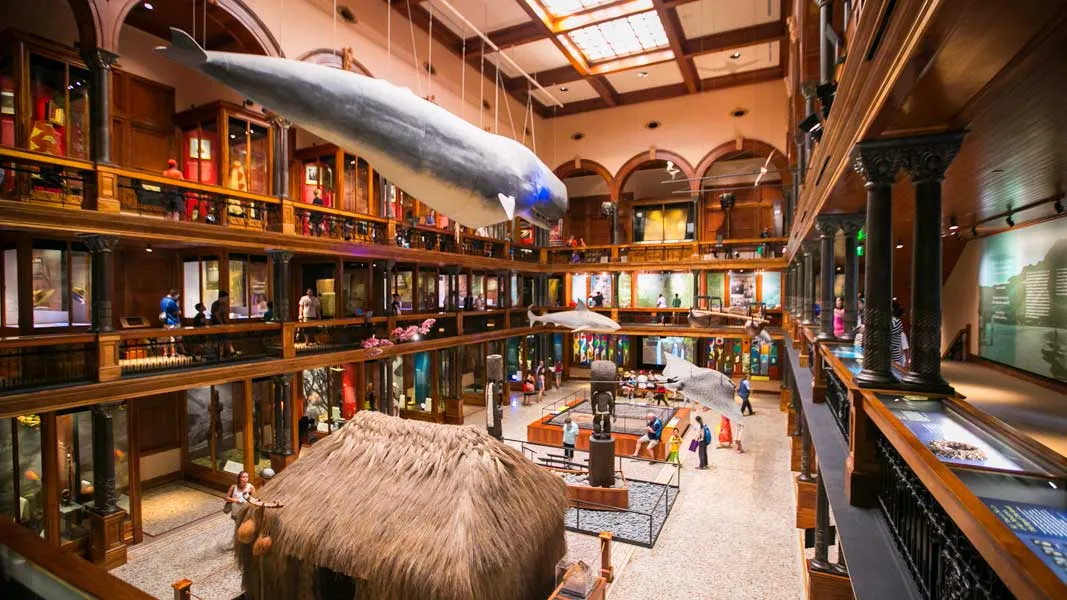Honolulu is famous not only for its beautiful beaches and pleasant tropical climate but also as a rich cultural and historical center. If you want to take a break from the white sand beaches and delve deeper into the island’s past, visit the museums in Honolulu. Among them, the Bishop Museum stands out as a treasure trove preserving the stories and invaluable heritage of Hawaii and Polynesia.
Bernice Pauahi Bishop Museum: A Gateway to Hawaiian History
The Bishop Museum, also known as the Bernice Pauahi Bishop Museum, is the largest natural and cultural history museum in Hawaii. Founded in 1889 by Charles Reed Bishop in memory of his late wife, Princess Bernice Pauahi Bishop, the last descendant of the royal Kamehameha family, this museum is an invaluable repository of the history and culture of Hawaii and the Pacific Islands.

Discover the Extensive Collection of Polynesian Culture
With over 1.3 million cultural artifacts, the Bishop Museum boasts the world’s largest collection of Polynesian cultural artifacts. Here, you can admire unique works of art, ancient tools and weapons, traditional costumes, exquisite jewelry, and many other items reflecting the life and beliefs of native Hawaiians, Pacific Islanders, and immigrants to Hawaii.
Highlights of the collection include magnificent feather helmets (ʻahu ʻula) and feather cloaks (lei hulu), symbols of power and status for Hawaiian chiefs. The creation of these pieces was extremely elaborate, requiring meticulousness and patience from skilled artisans. Each feather was carefully collected and attached using special techniques, creating unique and priceless works of art.
Learn About Hawaii’s Natural History
Beyond preserving cultural artifacts, the Bishop Museum is also a research and education center for Hawaii’s natural history. The museum’s natural history specimen collection is among the largest in the United States, including plants, animals, insects, and minerals characteristic of the Hawaiian archipelago.
Visitors can explore Hawaii’s diverse ecosystems, from lush rainforests to majestic volcanoes. The museum also houses the third-largest insect collection in the United States, with millions of specimens collected from around the world.
Engage in Educational and Interactive Activities
The Bishop Museum is not just a place to admire artifacts but also an educational and interactive center where visitors can delve deeper into Hawaii’s history and culture through various programs and activities.
On Sundays, the museum hosts “Family Sunday” programs, where researchers share their latest discoveries in various fields, from volcanoes to the ocean. Visitors can also participate in workshops, classes on traditional arts and crafts, or explore interactive exhibits where they can touch artifacts and experience hands-on activities.
Hawaiian History Through the Bishop Museum’s Perspective
The Bishop Museum is more than just a place to display historical and cultural artifacts; it is also a skilled storyteller, helping visitors better understand Hawaii’s formation and development.
From Tribal Society to Unified Kingdom
The Bishop Museum helps us visualize the life of ancient Hawaiians, from simple coastal villages to complex religious rituals. We can learn about the tribal social system, agricultural and fishing activities, as well as the roles of chiefs and priests in community life.
In the late 18th century, Kamehameha I unified the Hawaiian Islands into a powerful kingdom. The Bishop Museum displays many artifacts related to the Kamehameha dynasty, including weapons, jewelry, and personal belongings of the king.
Colonial Period and Modernization Process
In the 19th century, Hawaii became a target for Western powers, especially the United States. The Bishop Museum records this turbulent historical period, from the decline of the monarchy to the 1893 revolution and Hawaii’s annexation to the United States in 1898.
The museum also exhibits artifacts related to Hawaii’s modernization process, including the development of the sugar industry, the arrival of Western religions, and changes in the Hawaiian way of life.
Hawaiian Cultural Heritage in the Modern World
Today, Hawaii is a multicultural state of the United States, but Hawaiian cultural heritage is still cherished and preserved. The Bishop Museum plays a vital role in maintaining and promoting Hawaii’s traditional cultural values while introducing them to the world.
The museum organizes educational and cultural programs, supports local artisans, and collaborates with other organizations to preserve historical and cultural sites throughout the Hawaiian archipelago.
Plan Your Visit to the Bishop Museum
The Bishop Museum is located at 1525 Bernice Street, Honolulu, HI 96817, USA. The museum is open daily from 9:00 AM to 5:00 PM, except for certain holidays.
Admission is $24.95 for adults and $14.95 for children ages 4 to 12. Visitors can purchase tickets online or at the museum’s ticket counter.
For the best experience, you should spend at least 3-4 hours exploring the museum. Bring a camera to capture memorable moments and don’t forget to visit the museum’s gift shop for unique souvenirs.
Conclusion
The Bishop Museum is an unmissable destination for anyone wanting to learn about Hawaii’s rich history and culture. With its vast collection, diverse educational activities, and vital role in preserving cultural heritage, this museum is an invaluable treasure trove that you should not miss when visiting Honolulu. Come and discover fascinating stories about Hawaii’s past at the Bishop Museum!